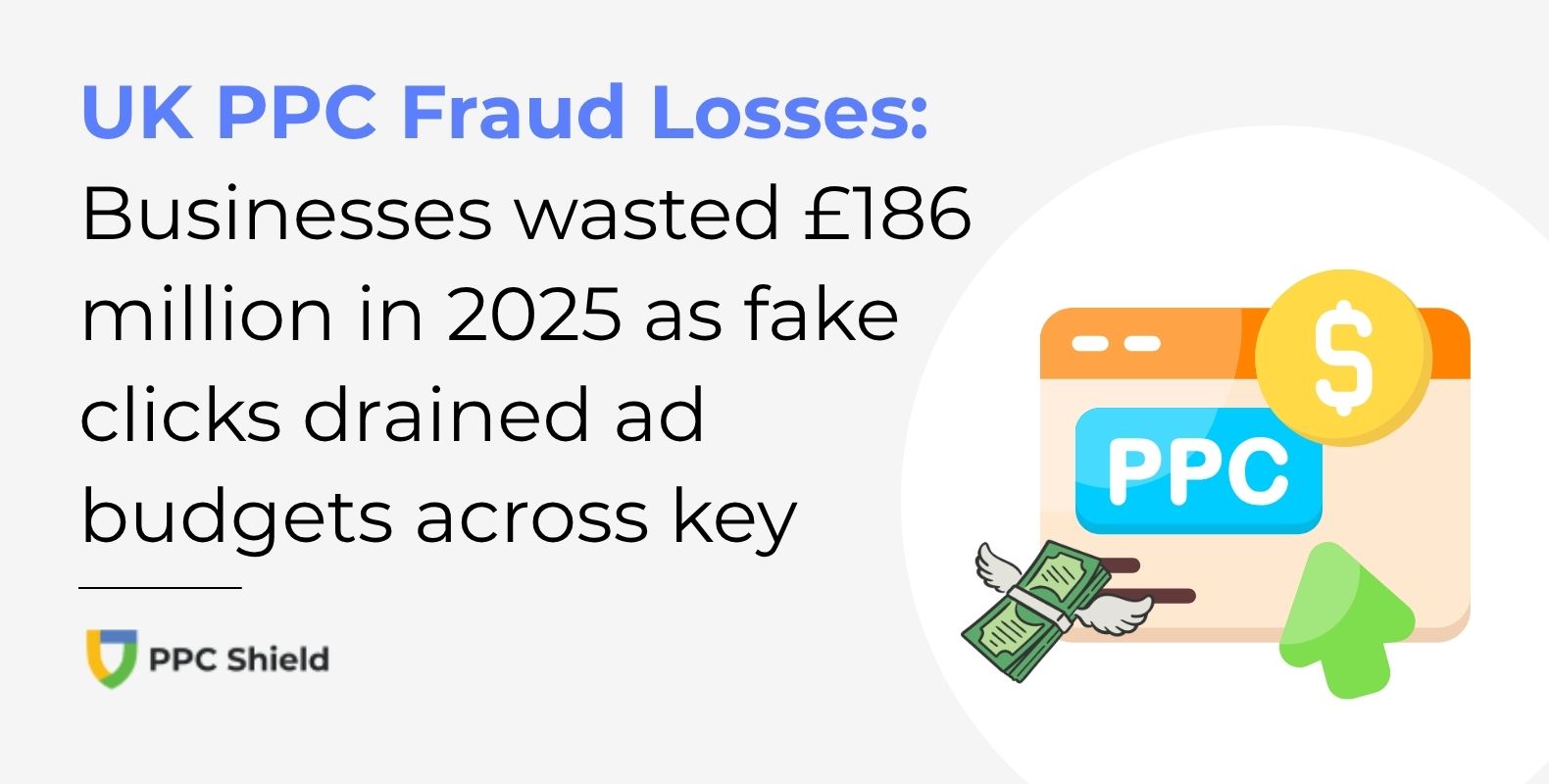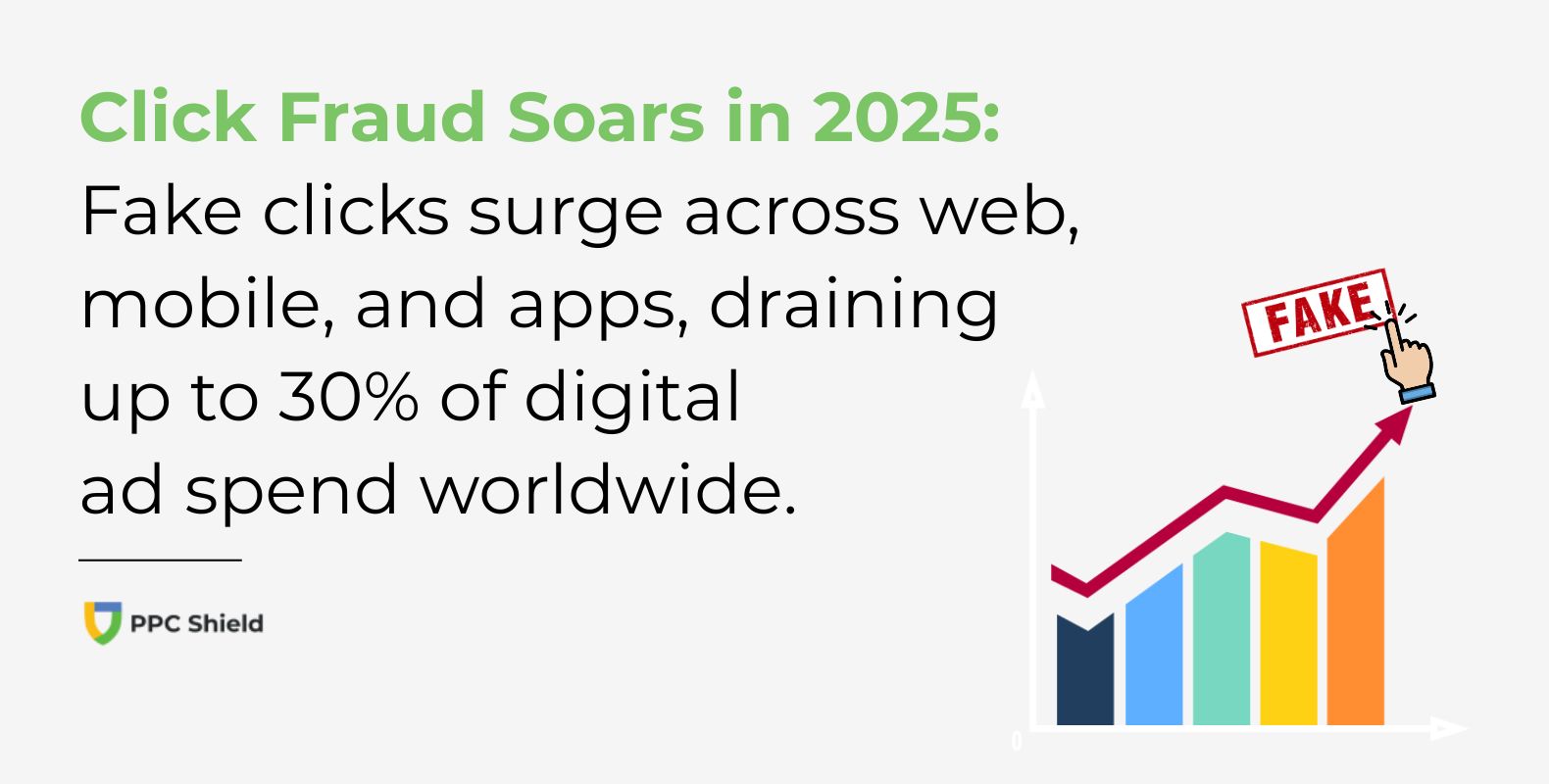PPC Fraud Causes £186 Million in Wasted Ad Spend for UK Businesses

Massive Financial Impact Across the UK
UK businesses lost an estimated £186 million to fraudulent clicks on pay-per-click advertising in 2025, with financial services and retail sectors hardest hit
40% of all PPC campaigns experienced some form of click fraud, with an average budget override of 22% due to invalid clicks
Small businesses facing proportionally higher losses, with firms spending under £5,000 monthly losing 27% of their PPC budgets to fraudulent activity
New research has revealed that click fraud continues to plague UK businesses’ digital advertising efforts, with companies wasting millions on invalid and fraudulent clicks.
A study by PPC Shield, a company specialised in detection and prevention of PPC clicks frauds, analysed data from over 15,000 advertising accounts across the UK to determine the true cost of click fraud in 2025.
Top 5 Most Significant Findings
The research found that UK businesses lost an estimated £186 million to fraudulent clicks in 2025. This represents a substantial portion of digital advertising budgets that delivered no return on investment. The financial impact has increased by 12% compared to previous years, indicating that click fraud remains a growing concern for advertisers.
The financial services sector was hardest hit by click fraud, with 53% of all campaigns experiencing some form of invalid clicks. This was followed closely by retail at 47% and real estate at 42%. These sectors typically have higher cost-per-click rates, making them more attractive targets for fraudulent activity.
Bot networks were identified as the primary source of click fraud, accounting for 64% of all invalid clicks detected. These sophisticated networks can mimic human behaviour to avoid detection, while competitor clicks made up 21% of fraudulent activity, and click farms were responsible for the remaining 15%.
Small businesses with monthly ad spends below £5,000 were disproportionately affected, losing an average of 27% of their PPC budgets to fraud. In comparison, enterprises with monthly spends exceeding £50,000 lost 18% of their budgets, suggesting larger companies may have more resources dedicated to fraud prevention.
Mobile devices accounted for 72% of fraudulent clicks, significantly higher than desktop (28%). This trend reflects the growing sophistication of mobile bots and the challenges in detecting fraudulent mobile traffic due to the variety of devices and operating systems in use.
Table: Top 5 Most Significant PPC Fraud Findings in 2025
Least Significant PPC Fraud Findings
While the overall picture shows concerning levels of fraud, some areas showed lower impact. Video ad campaigns experienced the lowest fraud rates at just 8%, compared to 42% for search ads and 38% for display networks. The visual nature and engagement metrics of video ads appear to make them less susceptible to fraudulent activity.
The education sector had the lowest fraud rate among all industries analysed, with only 12% of campaigns affected. This was followed by healthcare at 15% and non-profit organisations at 17%, suggesting these sectors may be less competitive or have lower cost-per-click rates, making them less attractive to fraudsters.
Early morning campaigns running between 4am and 7am experienced significantly lower fraud rates of 9%, compared to peak business hours (10am-2pm) which saw rates of 46%. This suggests fraudulent activity follows patterns of legitimate user behaviour to avoid detection.
Brand-specific keywords showed lower fraud rates (11%) than generic industry terms (43%), indicating that highly targeted campaigns focused on brand terms may be less susceptible to invalid clicks.
Northern Ireland had the lowest regional fraud rate in the UK at 14%, while London experienced the highest at 48%. This regional variation may reflect differences in competition levels and the value of regional keywords.
Table: 5 Least Significant PPC Fraud Findings in 2025
The Scale of the Ongoing Problem
Jacques Zarka, Senior Analyst of PPC Shield, commented on the findings:
“The scale of click fraud revealed in our research is significant but not surprising. What we’re seeing is a sophisticated ecosystem of fraud that continues to evolve alongside detection methods. The fact that small businesses are most affected is particularly troubling, as they often lack the resources to identify and combat these issues.”
“While some campaign types and sectors show lower fraud rates, no advertiser is immune. Our data shows that without proper protection, businesses are essentially throwing away roughly a fifth of their digital advertising budget. The good news is that with proper monitoring and prevention systems, companies can significantly reduce their exposure to click fraud.”
“Most concerning is the rising sophistication of mobile-based fraud, which now accounts for nearly three-quarters of all invalid clicks. As mobile continues to dominate the digital landscape, advertisers need to pay special attention to their mobile campaign metrics and implement specific protections for these channels.”
The study analysed data from January to December 2025, examining more than 15,000 advertising accounts across 12 industry sectors. PPC Shield’s proprietary detection technology identified fraudulent clicks based on multiple factors, including IP reputation, user behaviour patterns, and click velocity.







